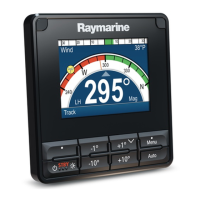What to do if my FLIR Raymarine p70s will not boot up and is stuck in a re-boot loop?
- EElizabeth AndersonAug 9, 2025
If your FLIR Controller is stuck in a reboot loop, it could be due to: * A problem with the power supply and connection. Refer to the solutions for the problem 'Product does not turn on or keeps turning off'. * Software corruption. In this case, try re-flashing the latest software. On display products, as a last resort, you can try to perform a ‘Power on Reset’; however, this will delete all settings, presets, and user data (such as waypoints and tracks) and revert the unit back to factory defaults.

